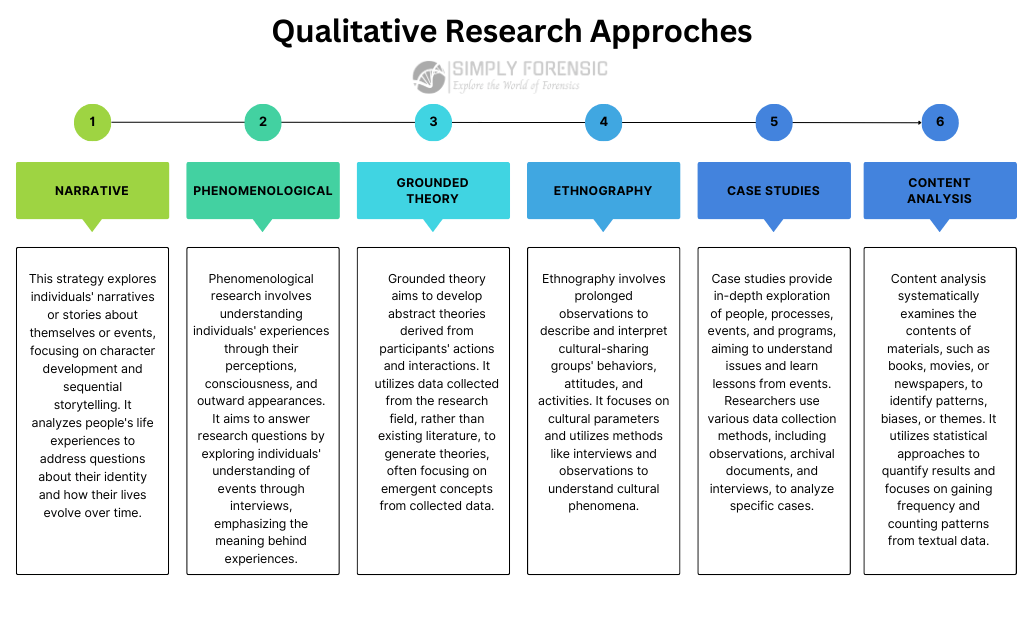Exploring Qualitative Research
Qualitative research is a journey into the depth of human experience, offering a lens through which we can explore the nuances of social realities, personal perceptions, and the intricate fabric of lived experiences. Unlike its quantitative counterpart, qualitative research seeks to understand the ‘why’ and ‘how’ behind phenomena, prioritizing depth over breadth. This methodology embraces the complexity of human behavior, recognizing that the richness of human experience cannot always be reduced to numbers. Through techniques such as interviews, focus groups, observations, and document analysis, qualitative researchers collect rich, descriptive data Information in analog or digital form that can be transmitted or processed. Read Full Definition. This data captures the essence of participants’ experiences in their own words.
Information in analog or digital form that can be transmitted or processed. Read Full Definition. This data captures the essence of participants’ experiences in their own words.
At its core, qualitative research is interpretative, aiming to construct meaning from the data collected. It operates under the assumption that reality is subjective and multifaceted, influenced by the context in which it is experienced. This approach allows researchers to delve into individual perspectives, societal norms, and cultural values, uncovering the layers of meaning that shape human interactions and perceptions. By focusing on the specific contexts in which people live and work, qualitative research provides insights into the complexities of social phenomena, offering a comprehensive understanding of the factors that drive human behavior.
Core Features
One of the defining features of qualitative research is its flexibility. The open-ended nature of qualitative methods facilitates a deep engagement with the subject matter, allowing researchers to adapt their approach as new insights emerge. This iterative process, where data collection and analysis proceed in tandem, enables a nuanced understanding of research questions, grounded in the lived experiences of participants.
Moreover, qualitative research is characterized by its emphasis on the researcher’s reflexivity—the ongoing examination of how the researcher’s background, biases, and interactions with participants influence the research process. This critical self-reflection is essential for ensuring the integrity and authenticity of the research findings, as it helps to mitigate the potential for biasThe difference between the expectation of the test results and an accepted reference value. Read Full Definition and ensures that the voices of participants are accurately represented.
Methodological Approaches

Narrative
Narrative research delves into individuals’ stories or personal experiences, emphasizing character development and sequential storytelling. It analyzes people’s lives based on their stories, exploring questions like “Who are they?” and “How do their lives change over time?”
Phenomenological
Phenomenological research focuses on understanding individuals’ experiences by exploring their viewpoints and consciousness. Through interviews and inward reflection, it seeks to uncover the meaning behind events and experiences.
Grounded Theory
Grounded theory aims to develop abstract theories derived from participants’ actions and interactions. It collects data directly from the research field. It focuses on emergent concepts and theories. Methods like on-site observations and interviews are used.
Ethnography
Ethnography involves prolonged observations to describe and interpret cultural-sharing groups’ behaviors and activities. It provides insights into cultural parameters and utilizes methods like interviews and observations to understand group dynamics.
Case Studies
Case studies provide in-depth exploration of people, processes, and events, allowing researchers to analyze specific cases in various fields. Researchers use multiple data collection methods, including observations and interviews, to gain insights into real-life scenarios. Case studies offer detailed insights into complex issues. They examine a particular instance or phenomenon. They also provide the real-world implications.
Content Analysis
Content analysis systematically examines various forms of communication, such as books and movies, to identify patterns and themes. It utilizes statistical approaches to quantify results, focusing on gaining frequencyFrequency is a fundamental concept in physics and wave theory. It refers to the number of times a specific point on a wave, such as a crest or trough, passes a fixed reference point in Read Full Definition and counting patterns from textual data.
When to Use Qualitative Research:
Qualitative research methods are valuable in various scenarios where in-depth insights and understanding are required. Here are some instances where qualitative research can be particularly beneficial:
- Developing New Products or Concepts: Qualitative research can help in the creation and refinement of new products or concepts by understanding consumer needs, preferences, and behaviors.
- Improving Marketing Strategies: Studying brands, products, or services through qualitative research can provide valuable insights for refining marketing plans and strategies to better resonate with target audiences.
- Identifying Strengths and Weaknesses: Qualitative research can uncover both the advantages and disadvantages of products, services, or brands, helping businesses make informed decisions for improvement.
- Understanding Consumer Behavior: Qualitative research allows for a deep understanding of consumer behavior, preferences, and motivations, which can inform product development, marketing tactics, and customer engagement strategies.
- Assessing Audience Responses: Qualitative research is effective in exploring how target audiences respond to marketing efforts, communication channels, and brand messaging, providing valuable feedback for optimization.
- Exploring Market Segments: Qualitative research helps in investigating market segments, demographics, and customer groupings to identify niche opportunities and tailor offerings to specific audience needs.
- Gathering Perceptions: Qualitative research enables the collection of information on how people perceive brands, businesses, products, or services, helping organizations understand their reputation and positioning in the market.
In summary, qualitative research is instrumental in uncovering rich insights. It helps in understanding consumer behavior. It also informs strategic decision-making across various business and marketing aspects.
Benefits and Challenges
The strength of qualitative research lies in its ability to provide rich, detailed descriptions of complex phenomena. It offers insights that might remain obscured by more quantitative approaches. Its focus on context and meaning makes it particularly well-suited for exploring new or poorly understood areas. It contributes to theory development. It offers practical implications for policy and practice.
However, qualitative research is not without its challenges. The depth and complexity of qualitative data require extensive time and resources for collection and analysis. The subjective nature of the data can raise questions about reliability and validity. Additionally, qualitative research is interpretative. This means that findings are often not generalizable in the same way as quantitative results. Despite these challenges, the value of qualitative research in uncovering the richness of human experience is undeniable. It provides a complementary perspective that enriches our understanding of the world around us.
| Benefits | Challenges |
|---|---|
| Provides rich, detailed descriptions | Requires extensive time and resources for collection |
| Offers insights into complex phenomena | The subjective nature raises questions about the reliability |
| Well-suited for exploring new areas | Findings may not be generalizable like quantitative |
| Contributes to theory development | Interpretative nature can lead to varied interpretations |
| Offers practical implications for policy |












